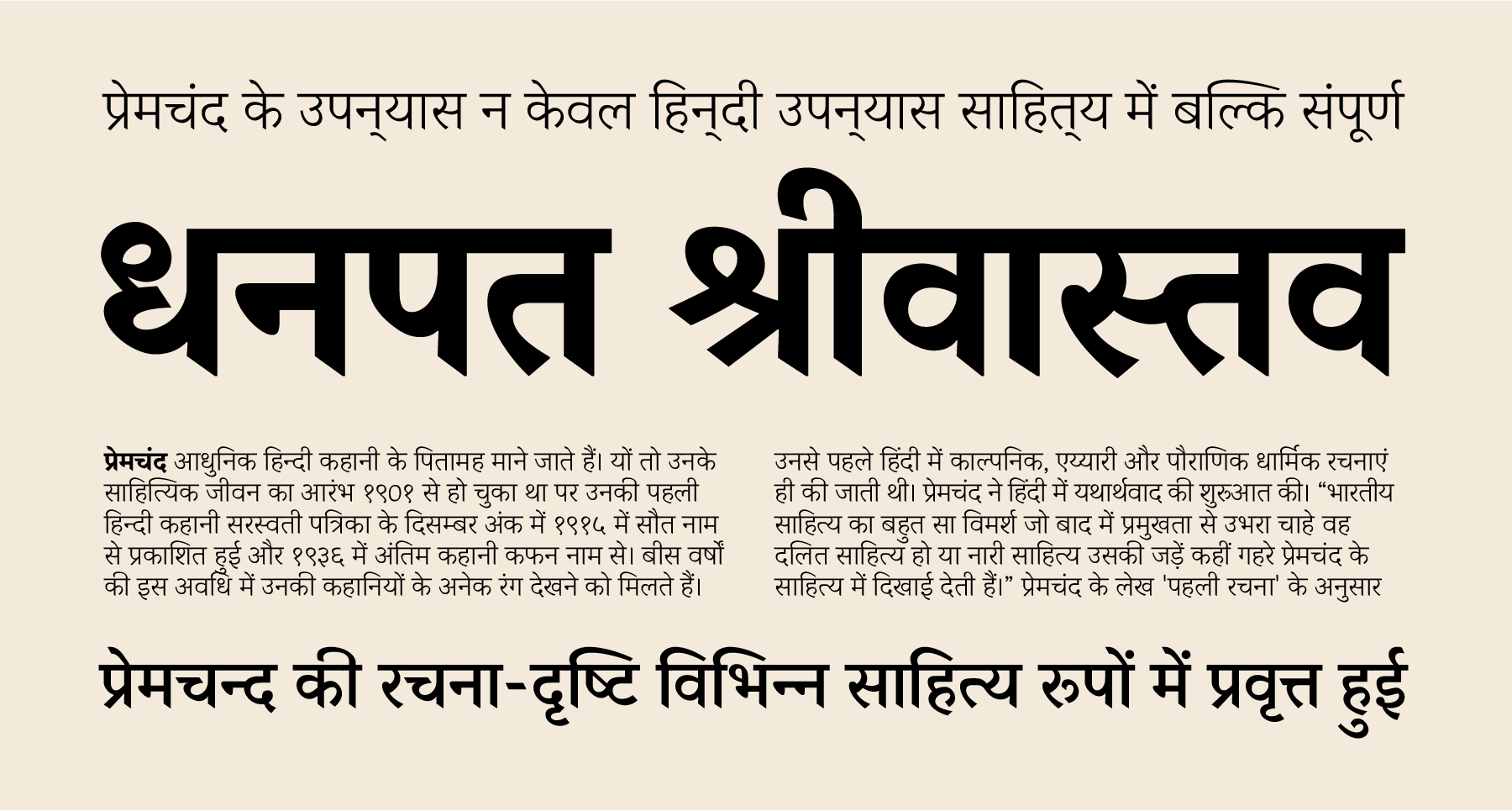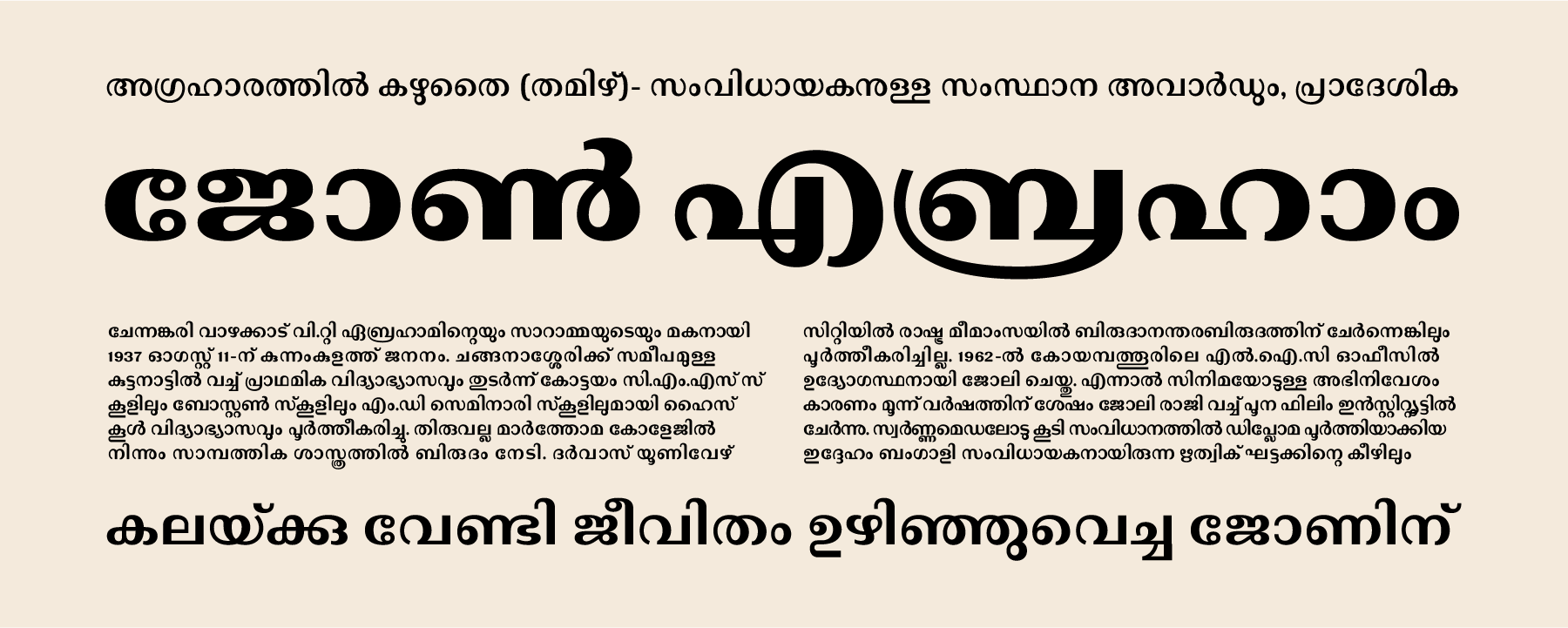This month, the Indian Type Foundry is releasing three new typefaces for three separate Indian scripts. These families have many things in common; not only were they each developed for text sizes, but all three designs also incorporate high levels of stroke contrast. Please take a moment to meet Deccan Telugu, Munshi Devanagari, and Quilon Malayalam.
Deccan Telugu

Deccan Telugu is the Indian Type Foundry’s first retail release for the Telugu script. This family – designed by Ramakrishna Saiteja – offers five fonts ranging in weight from Light through Bold. Each font contains 719 glyphs, including the many conjuncts necessary for proper Telugu shaping. Like the traditional typefaces that have long been used for designing text-heavy Telugu documents, Deccan Telugu’s forms feature a strong vertical contrast. The sides of the characters tend to be drawn with rather thin hairlines, while the curves on the bottom portions of the base characters are gracefully curved and feature heavy swelling. While this amount of contrast is to be be expected in the Bold weight, Saiteja has excellently brought it into every style, even the Light.
Munshi Devanagari

Like Deccan Telugu, Munshi Devanagari also has five styles on offer. The contrast between the family’s Light weight and the Bold weight is quite dramatic, and each of the fonts may be mixed and matched to good effect in editorial design. The letterforms in the typeface are classically proportioned. Like other traditional Devanagari text faces, they feature a diagonal contrast axis, higher-than-average stroke contrast, and large counters forms – the later make Munshi Devanagari’s base characters highly recognisable and readable. Each font in the family has 751 glyphs, including hundreds of unique conjuncts, to ensure full support for the major languages written with the Devanagari script. Munshi Devanagari was designed at ITF by Ninad Kale. The design grew out of an unrealised custom typeface project; now it is available for licensing to everyone.
Quilon Malayalam

Quilon Malayalam is ITF’s third original Malayalam typeface for the retail market. While our previous designs for this script were primarily developed for display typography, Quilon Malayalam is a text face designed according to traditional Malayalam-script patterns. Quilon Malayalam’s characters are round and include visible stroke contrast; indeed, the play of thicks and thins along lines of text set with this family creates an even colour that is invaluable for readability. As the weights progress throughout the family, the stroke contrast used increases dramatically. For text set in the Regular weight, the Semibold weight may be the best choice to use for emphasising individual words; the family’s Bold weight is best reserved for headlines. Quilon Malayalam was developed by ITF’s Jonny Pinhorn. Each of its four weights include 504 glyphs.